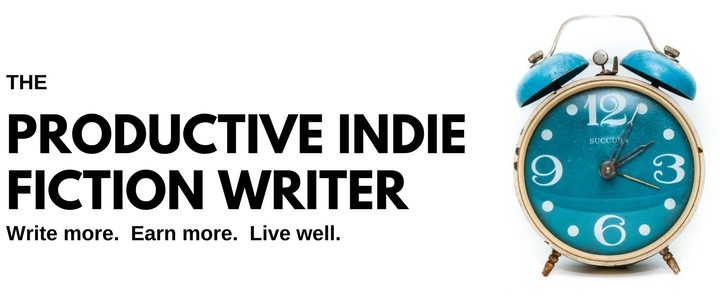
In the last part of this post we covered the brainstorming part of plotting, where
- you capture everything you know,
- then fill in the blanks,
- amalgamate,
- then drop all that information into your favourite story structure.
This post, we sort that amorphous blob of information into a well-developed story outline that will speed your writing process considerably.
The very first step, and a critical step that is often missed in plotting and outlining books and posts, is:
Make A Scene
Very often, when you brainstorm the story, you end up with vague statements such as:
Idris and Rhiannon square off.
This is a perfectly legitimate story beat, taken straight out of an outline from a recent book of mine. There is conflict inherent in this beat. All the previous beats build up to this one.
However, it isn’t a scene. There’s no setting, and no action except for the passive “square off”. There are no specifics. Reading that gives you no sense of the story in your head. You can’t see it.
Most of the plot you have written to this point will be the same. The character development beats, the plot arc beats, the conflict, will be very clear. There just won’t be a scene attached to it.
Your job now is to turn everything you have written down into scenes.
The more specific you can be now, the far easier and quicker the writing of the story will go.
So for the example above, I might write instead:
After the battle, the Army since around the campfire, drinking and playing games. Idris
challenges Rhiannon, and Rhiannon wins by using unexpected and feminine tactics.
Now we have a setting, action, even a beginning, middle and end of the scene. Depending on how you write, and how much freedom you want as you write your first draft, this might be enough information for you.
For books which are well into a series, and in genres and settings I know very well, quite often this is as far as I will take the outline.
Also, the farther into the story, the less accurate your predictions will be about how the story will flow. Decisions you make earlier in the story, as you’re writing it, will shift the outline farther on. So when I am into the third and fourth acts, my outlining becomes a little more vague, because I know it will likely look a bit different by the time I reach this point.
You can also go the other way and choose to be very detailed, right throughout your outline. You can add log lines to each scene which include the location, date and time, weather, even who appears in the scene. You can even formalize with bullet points the shifts of the character emotions and other factors.
Use your favourite scene structure and/or theory
There are many theories about scene structure out there. If you have a favourite one, or find one that appeals to your sense of story, then you can use the essential elements of that theory’s scene structure to build a template. Then you can plug the template into your outline, at the top of every scene, and use it to help you fully develop the scenes.
Once you have developed the scene to the degree of detail that you feel is necessary, you move on to the next one.
At this stage, it is probably best to work in a linear fashion, from opening scene to last seen. That is because the decisions you made earlier will affect what comes later. If you work from top to bottom, you will avoid some of the iterative backward and forwarding that comes with jumping around.
Here is another example from a recent outline of mine. In rough form, the beat was:
Daniel. Angry, Drinking to alleviate, throwing things…
Which became, in the final outline:
This can be his first introduction. Drawing room? Somewhere in the house,
at least. He’s on a tear. Staff are scattering, scared. This actually sets
up his alibi for the first murder, which happens while she’s trying to talk
to him. Sees him, but he scares her out of the room again, then he destroys
it, while she stands outside the door. Loss of weight because he’s not eating - she notices when she gets there. Also, he’s completely forgotten the dinner party – just as Nevern said he would.
If he’s a different personality, she’d be repelled, wouldn’t she? The anger
and unpredictability would scare her. She’s always felt safe with Daniel.
Now she doesn’t.
As you can see, there is far more going on in that scene than the first beat. That is because once I had the scene sorted out (the first paragraph), there were other beats near this one, or even further into the story, that were pure character beats which could be included in this scene.
Those additional beats I added beneath. They were melded into the scene as I wrote it.
You will find there are many character arc beats and some story beats which are far too small to justify a scene of their own. As I did, you can add them to already existing scenes, or put them aside to be added to later scenes.
Or, you can also choose to not show that beat at all. Not everthing you know about a story must be included in that story for the reader to see. The critical beats are those that must be shown in order for the reader to understand the story development, or why a character acts as they do. Anything else can be discarded if you want to. Or not. Your decisions to include or not include story beats form part of your writer voice and your brand.
The more books you write, the more practiced you will get at making these decisions.
The grayed out text in the sample, above, are notes and story movements which shouldn’t be visible to the reader, but provide bookmarks and mileposts as you move through the story.
Organize the Order of the Scenes
Once you have everything in your outline set into a scene, you can move the scenes around for best effect. Often, you won’t have to move them at all. They’re already naturally in the best place.
Sometimes I’ll rearrange the order of scenes by one or two scenes so subplots and secondary character scenes are broken up and the reader isn’t kept away from the central character and action for too long.
Now, read through your scene outline from top to bottom again.
- Does each scene connect naturally to the next?
- Or do you need linkage scenes – sometimes called “sequels”—to explain to the reader the consequences of the last scene and where that pushes the characters?
Once you have smoothed out the scenes and their progression, your outline is roughly done, except for one last check, which I’ll get to in the next post.
First though:
A Time Saving Hack (or two).
Plotting can be a black hole in time which sucks you in and buries you. It is so easy to get lost researching some obscure secondary fact that you think might be needed.
By far the biggest time waster for me, when I am plotting, is losing track of what it was I was trying to do.
- Why am I reading about the German methods of making chain mail?
- Okay, I’ve got her backstory nailed…where was I, again?
- Alright, I’ve moved that scene down to the third act…next?
You can wander around your outline, going over the same few scenes, and forgetting the rest. Then worry about what you have overlooked, and start from the top again.
The trick is to make sure you have navigation guides that will bring you back to where you left off, so you can move onto the next thing to do without the need to read from the top once more until you find where you left off…
Checklists to the rescue.
Checklists and templates which you build for yourself and refine as you complete more and more books, will keep you grounded and moving forward at best possible speed.
Your checklist might be as elevated as:
- Brainstorm
- Develop elements
- Fill in gaps
- Consolidate into structure
- Make scenes
- Connect scenes
- Last check.
Or you could break down those steps so you have microsteps which keep you anchored.
I’ve mentioned a few times about “theories” and different structures which are popular. If you are a proponent of the scenes-and-sequel model, or the Storyfix scene polarity theory—or anything else, it really doesn’t matter—then you can use your theory or structure to build a checklist unique to you and the way you build stories.
Then, every time you feel that “where was I…?” sensation, look at your checklist to see where you are up to.
Checklists will save you hours of floundering.
Sorting within your document
Another time saver that is unique to Microsoft Word, and, oddly, Microsoft OneNote (although your text editor might have a similar capacity – check your help documentation), is the ability to move paragraphs around with simple keyboard commands, instead of the cut-and-paste process that can quickly disorient you.
I demonstrated how to move paragraphs with the ALT+SHFT plus Arrow keys hack in a recent video, which you will find here. (Link is coded so video will start just where I begin to talk about moving paragraphs around.)
As I mention in the video, if you keep all your already-decided-upon paragraphs above an easy to find divider (I use a row of ++++++++, formatted as a Heading 1 styled header, so it shows in the navigation pane), then you will always know exactly where you are in the outline (which will get very long, depending on how detailed you are about your scenes).
As soon as you’ve finished one task, click back to the +++++ marker, look at the scene or paragraph beneath it, develop it into a scene, or check it, or whatever stage it is you’re up to, then move it above the +++++, into the proper place in your outline.
Back to the ++++++ and repeat.
This simple, mechanical process will cut out another huge swathe of wasted time.
__________
Next post, I will wrap up the process with the final check of your outline, and some scheduling tips.
[fusion_separator style_type=”shadow” hide_on_mobile=”small-visibility,medium-visibility,large-visibility” class=”” id=”” sep_color=”” top_margin=”” bottom_margin=”” border_size=”” icon=”” icon_circle=”” icon_circle_color=”” width=”” alignment=”center”][/fusion_separator]
.![]()
